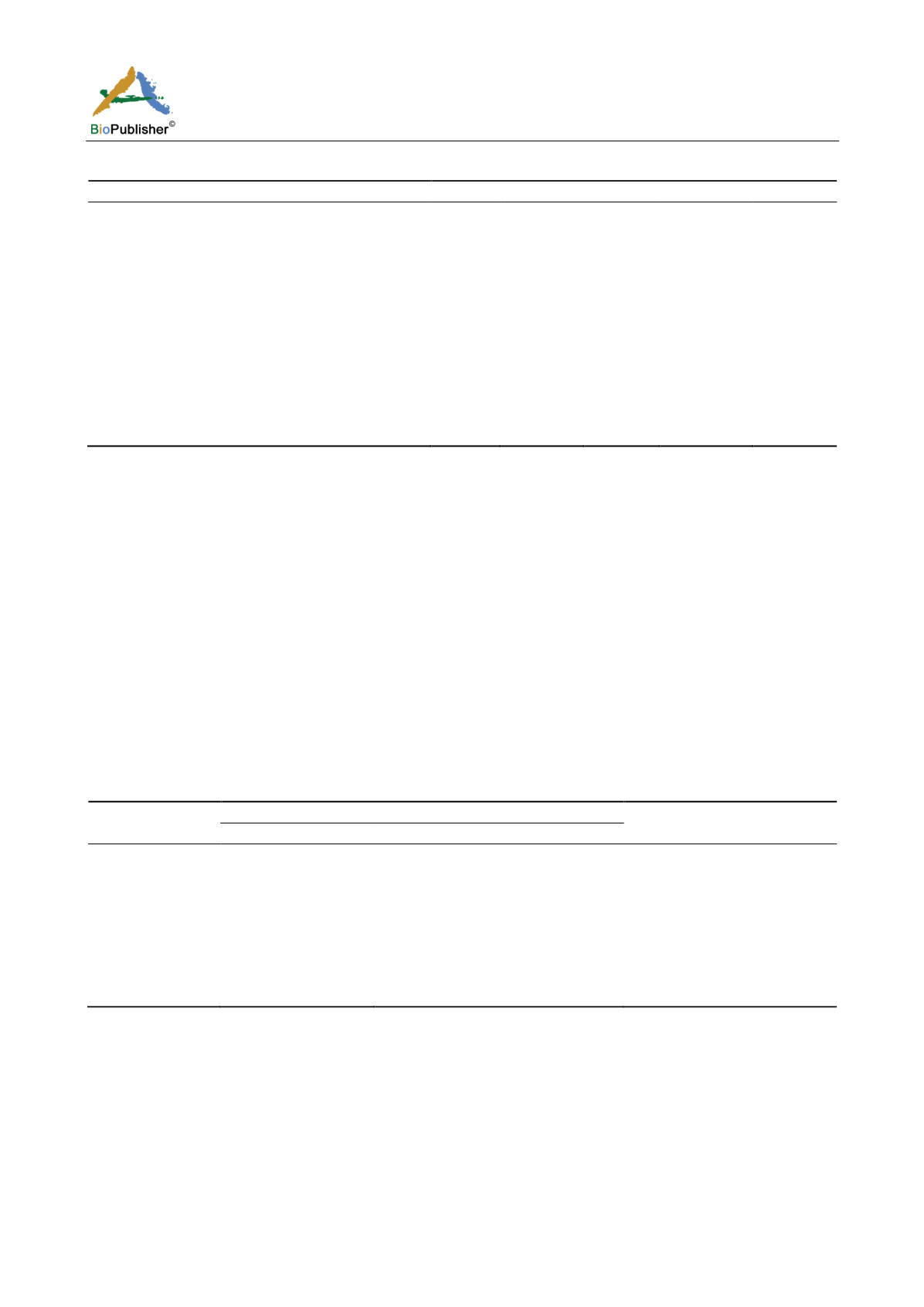
International Journal of Marine Science, 2017, Vol.7, No.16, 141-160
149
Table 10 Estimated Pollution load as Biodegradable organics in terms of kg BOD/day at Chittagong
Industrial zone
Pollution load (kg/day)
Pollution source in Chittagong area
Total
Textile
Paper
Leather
Others
Karnuphuli river
-
-
-
1400
110
Kalurghat
2500
-
-
4100
1500
Nasirabad/Sholashahar
6400
800
-
-
1800
Patenga
2000
200
-
-
1150
Kaptai (Chandraghona)
5800
2550
2100
-
-
Bhatiari
1000
600
-
-
400
Kumira
380
380
-
-
-
Barabkunda
600
600
-
-
-
Fauzdarhat
3200
2300
-
-
900
Domestic waste load from
Chittagong city
3500
-
-
-
-
Note: Source: ESCAP (1988)
Moreover, 05 major canals carry domestic and municipal wastes and effluents to the River Karnafully. Urea
Fertilizer Factory discharges untreated effluents directly into the River Karnafully. Hg, Pb, Cr, Cd and As from
144 industries, degradable and persistent organic and inorganic compounds from 297 industries and oil, lubricants
from (40-50) tankers polluting Karnafully river (MoFL, 2013). From the survey of effluents from different
industries, it has been found that the discharge is generally composed of organic and inorganic wastes. The
organic wastes are the effluents from the tanneries, fish processing units, degradable wood chips, pulps and
untreated municipal and sewage (about 40,000 kg BOD daily) etc. The inorganic waster are chemicals used by the
industries such as various acids, bleaching powder, lissapol, hydrogen peroxide, alkali, salts, lime, dyes, pigments,
aluminium-sulphate and heavy metals etc. The DDT factory and fertilizer factory disposing of DDT, toxic
chemicals and heavy metals to the Karnafully River and ultimately to the Bay of Bengal. Some survey showed
about 220 ppm of chromium, 0.3-2.9 of cadmium, 0.05-0.27 ppm of mercury, 0.5-21.8 ppm of lead entering into
river and sea water much higher than allowable limits and extremely alarmingly to aquatic flora and fauna and
through food chains to human beings (Table 11).
Table 11 Mean load of heavy metals in the coastal water of Chittagong (Tamanna and Hossain, 2010)
Metals
Mean load of metals (µg/L)with seasonal variation
Standard limit (µg/L)
Rainy
Dry
As
3.746
3.981
2.60
Co
8.989
11.937
0.50
Cr
23.346
25.085
50
Cu
57.423
62.336
08
Fe
536.371
583.042
300
Mn
20.349
23.104
100
Ni
7.844
12.106
01
Pb
23.778
24.015
8.50
Note: Maximum deterioration of the water quality was observed during summer and rainy season due to excessive disposal of wastes
and outfall of land washing (Hossain, 1988)
It may be mentioned that Bangladesh obtain table salt from solar drying of sea water and consequently increase
pollution of sea water shell create a serious national health hazard situation (IEDS, 2003). The concentration of Pb,
Cu, Fe, Ni and Cr were observed higher and concentration of Mn and Cd were found lower than that of the
recommended values. It was assumed that from the analytical findings that the estuary has been polluted from
domestic sewages, land washout, river runoff and shipping activities (Das et al., 2002). There are some study on
the contamination level of heavy metals in water and in sediments along the Karnafully estuary and its adjacent
coastal area (Sarker, 1998; Sanjoy, 2007; Tamanna and Hossain, 2010; Hossain, 2010). An ADB study reported


